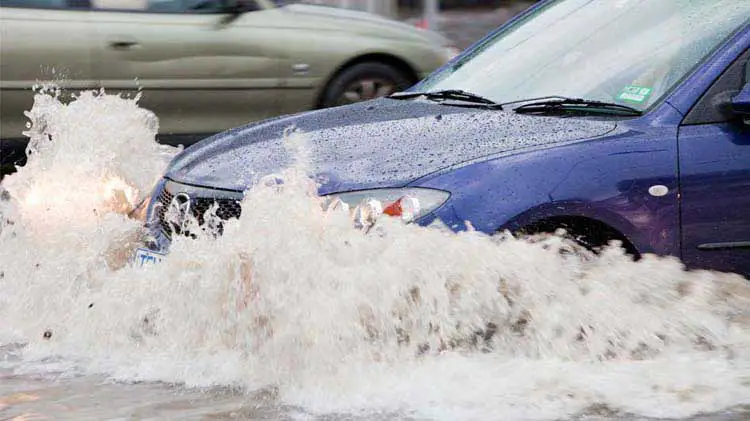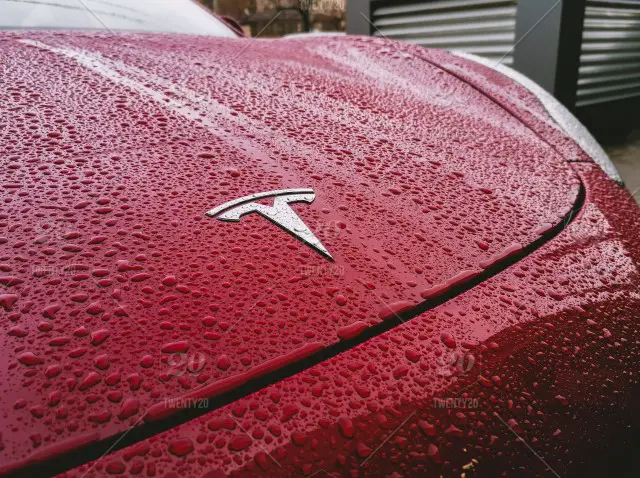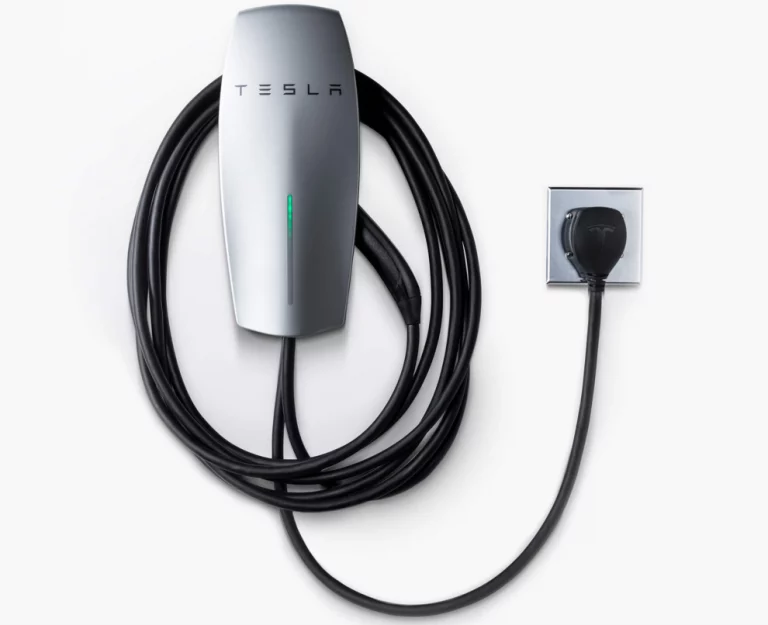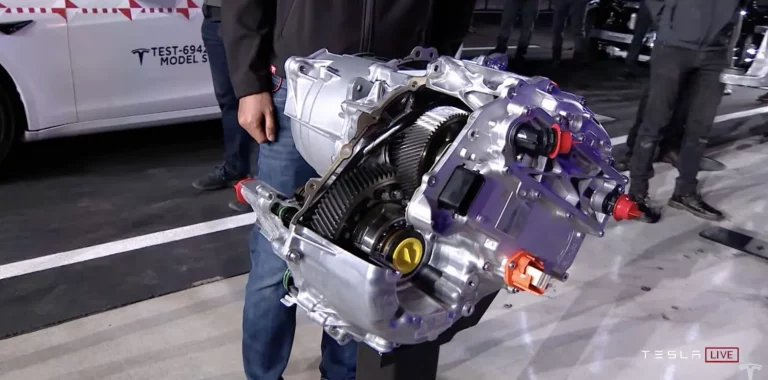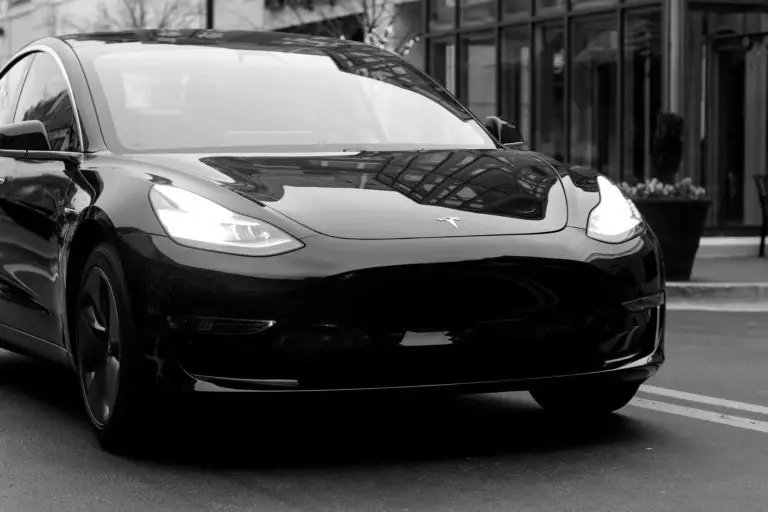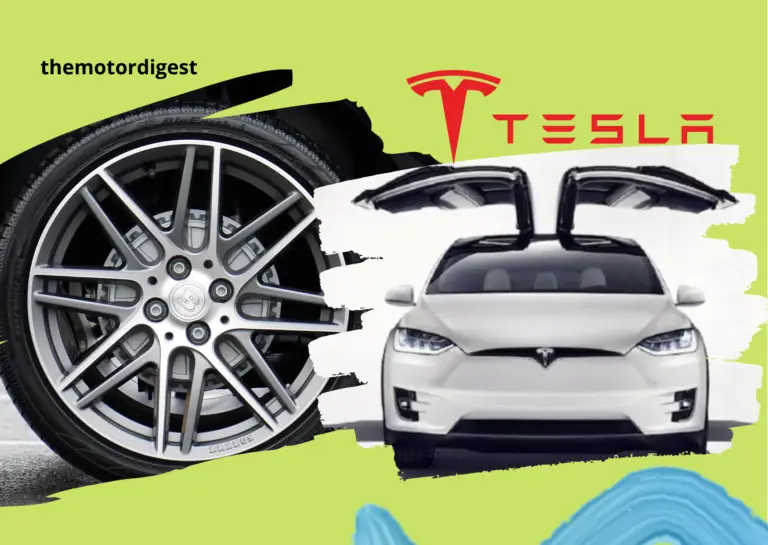Can A Tesla Drive In Water?
Tesla has behaved like a classic disruptor to the motor industry. They have developed and implemented technologies that everyone just accepted previously were not viable and realistic, making them part of their offering. These include Electric Motors and batteries, fully autonomous driving ability, and dealer network elimination.
Tesla cars can drive in water because the electrical components are completely sealed from the outside, making it safe to drive through water. Unlike internal combustion-powered cars that need openings for breathing air, expelling exhaust gasses, and cooling the engine.
When you consider a Tesla’s ability to handle the water, the possibility of being electrocuted must pass through your mind. Tesla advises owners that it is not a good practice to drive their cars through water; in an emergency, that car is rated to withstand freshwater to a depth of 1.5 meters for up to half an hour.
Table of Contents
- How Can Tesla Cars Drive Through Water?
- Can Tesla’s and Conventional Cars Drive Through Water?
- Conclusion
How Can Tesla Cars Drive Through Water?
In a Tesla, the electric motor(s) power comes from a battery pack installed at the bottom of the vehicle. Regulations require the battery to be fully sealed to prevent the ingress of outside contaminates.
Tesla’s batteries are legally required to score an IP (Ingress Protection) rating of IP67.
The number 6 stands for the ability of the vehicle to keep solid foreign objects out, which means that contaminants as small as dust must not enter any of the electrical components at all, ever!
The number seven scores the ability of the vehicle to prevent the ingress of fresh water when submerged to 1.5 meters for no less than half an hour. The next score up the scale is applied to fully submersible craft such as submarines!
If the Tesla hits something underwater and overturns (which can happen if the floodwaters are raging intensely), the battery system will break the connection to the rest of the car and seal itself, preventing any short circuits causing an electrocution risk or from igniting a fire.
Can Tesla’s and Conventional Cars Drive Through Water?
Tesla’s cars surpass the ability of both Hybrid Electric and internal combustion engine cars to drive in water.
The following identifies vehicle type’s ability to drive in water.
You Can Drive Tesla’s Through Water
Electric motors need no air to operate.
It is easier to seal the electrical components because there are no air intake holes that must be closed. There are also no exhaust pipes to get blocked, resulting in a vehicle almost immune to the threat of sinking.
If the occupants keep the windows and doors fully closed, the Tesla will be well sealed and start to float over the water rather than sinking, as a conventional vehicle will do.
Tests have shown that electric motors continue to produce power in the water. The rotational movement of the powered wheels acts like wheel paddles and provides sufficient motive power to move the car over the water.
In September 2021, a Model S Tesla was subjected to a flood test where a ditch was filled with 7 feet of water. Even though the testers added 4,000 lbs (1,814 kg) of extra weight, the car didn’t sink, and it floated across the ditch.
In a real-world example, during June 2021, during historic floods, in China’s Henan province, a Tesla Model 3 can be seen creating vast sprays of water as it powers itself out of the flood. Amusingly, it passes stalled cars powered by conventional internal combustion engines.
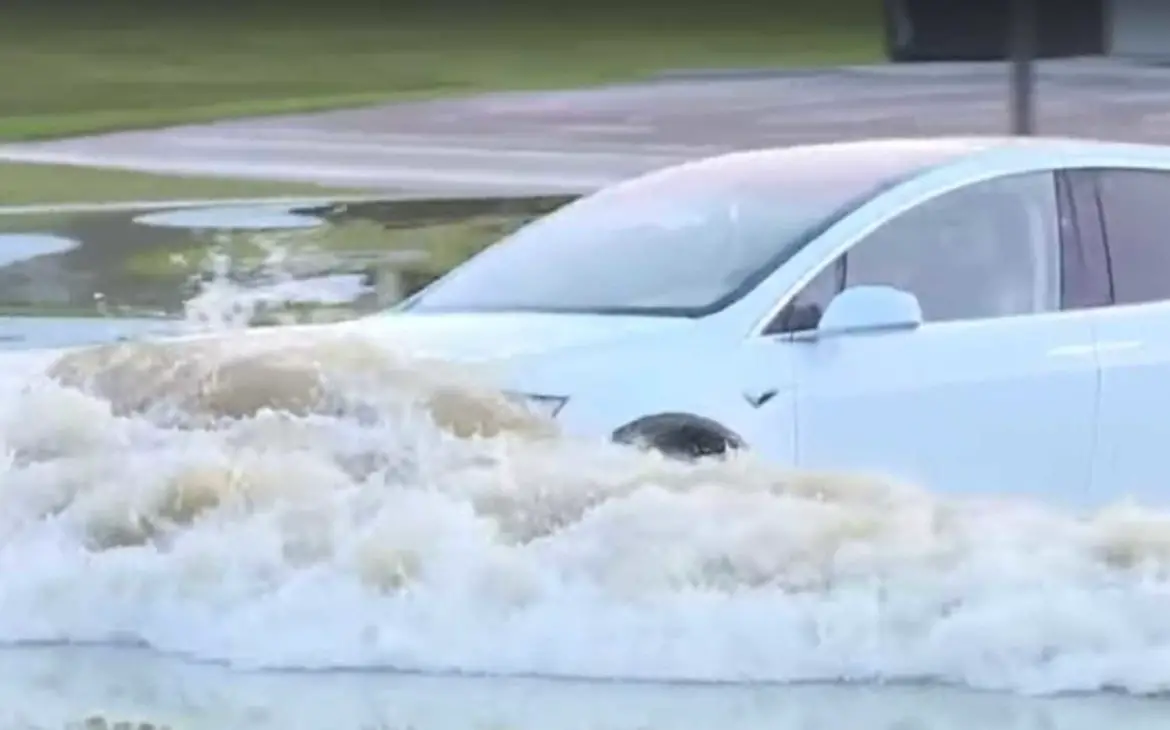
Combustion Engines Cant Be Driven Through Water
Internal combustion engines have the following limitations if they need to operate underwater.
If Driven Through Water, They Get No Air
An internal combustion engine needs the triad of spark (an ignition source), fuel, and oxygen to create combustion to force the pistons down.
Oxygen is drawn into the piston chamber via a carburetor or fuel injection system, mixing the fuel with air and directing it to the piston chamber. If the air intake becomes covered by water, the engine will stop.
You can add a snorkel to the system, as do military Humvees, which often have a snorkel attached to a port on the side of the hood. The snorkel allows them to submerge up to 5 feet (1.6 meters) of water while still getting air.
If you use your car to go off-road use, it can be modified in this way; however, if the water level covers the snorkel, the problem will reoccur.
When Driven Through Water, the Spark Stops
The car’s ignition system provides a timed spark when the piston reaches the top of the cylinder, and the fuel system provides an excellent mix to ignite when the spark plug is activated.
The ignition system has the following components:
- Battery
- Alternator
- Coils
- Spark Plug Leads
- Spark Plugs
- Ignition Module (Modern vehicles)
- Distributor (Older vehicles)
If any part of the ignition system is submerged, it will cease to provide the energy for the spark, and the engine will stop.
They Need Fuel to Be Driven Through Water
Internal combustion engines need uncontaminated gas to fuel the ignition.
If water ingresses any part of the fuel system, the fuel will be contaminated and not fuel the spark.
They Need to Expel the Exhaust Gasses in Water
The combustion process creates gasses in the piston chamber, which must be expelled.
If the water is shallow, the exhaust gasses still get out because the engine produces sufficient under pressure. The water pressure becomes too great at greater depths, and the exhaust system is blocked with water.
The unexhausted gasses create pressure in the piston chamber, preventing fresh air/fuel from entering the cylinder. If the fuel/air mixture does not enter the piston chamber, no spark will occur, and the engine cannot continue to operate.
To demonstrate this put a sealed rag over the exhaust pipe openings of your car, and you will see it stops within two or three strokes of the pistons.
Hybrid Electric Vehicles Can’t Drive Safely Through Water.
While a hybrid-electric vehicle is like a Tesla in that they have batteries and electric motors, they also rely on combustion engines, even PHEVs. The gas engine component adds the same weaknesses associated with a car powered by an internal combustion engine.
Conclusion
Even the hardiest off-road vehicle should not be deliberately driven in water. The risks of being swept away, overturning, or wedging in inaccessible spots are just too significant.
If the need to drive through flooding waters is thrust on you, the most capable family vehicles that can continue operating in these conditions are Teslas.
Amazon and the Amazon logo are trademarks of Amazon.com, Inc, or its affiliates.

